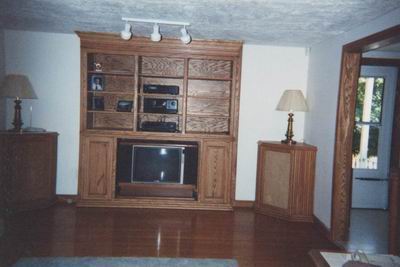Suspending Dust-Collector Ducts from the Ceiling
Advice on hanging rigid and flexible ducting from a high ceiling for a dust-collector vacuum system. August 30, 2007
Question
In my old shop the ceilings were 10', and I just strapped ductwork flush to the ceiling. I'm about to move into a new space that has 16 - 20 ft ceilings. I'm wondering how best to ensure a rigid design while hanging down 2-6 ft from the roof. Also, should I run rigid duct down to blast gates that are within reach, then transition to flex hose? I assume you don't want flex to constantly be under vacuum, or is this not a big deal? I would like to have some flexibility on each machine placement, so I don't want to go rigid all the way to each machine if I can help it.
Forum Responses
(Dust Collection and Safety Equipment Forum)
From contributor B:
What dust collector are you operating with? How long are your major drops? Are you running a main down the center of the shop, with drops to both sides?
For your pipe rigidity, use wall fasteners of some type where your drops meet the wall. Simple slip-ties behind a furring strip should do. You could also use heavy staples to fasten the ties to a stud. Along the ceiling run, I'd imagine a few well-placed sheet-metal screws at your joints should keep things fairly rigid. The best solution, of course, would be to use all rigid pipe right to the machine, but that only becomes important if your dust collector's draw is marginal at that drop. At 4000 fpm, a fairly smooth-walled 6" flex will have roughly 0.065"sp resistance per foot. By comparison, a galvanized metal pipe is 0.042 per foot. With smaller drops, the resistance gets much higher, even at the same velocity.
Example: 4" pipe... 349 cfm = 4000 fpm
smooth-walled metal 4" pipe has a resistance of 0.07"sp per foot.
Reasonably smooth flex = 0.11"sp per foot
From the original questioner:
I've got a 10 HP cyclone right now - might be moving to higher cfm blower at some point. My plan is to run a main line diagonally from the dust collector corner to cover the long leg of the triangular space occupied by power equipment, over my major dust/chip producing machines, with branches going off mostly on one side to hit the machinery in the point and short sides of the equipment triangle. I want to keep the duct at least 12 feet high to be out of the way, so drops will be 6-8 feet vertically.
From Curt Corum, forum technical advisor:
Try to get your main duct as low as possible to minimize branch drops. Keep your flex to a minimum. There are a couple options to secure pipe that is several feet from ceiling. Option 1 - use 2 pc hangers and keep your tabs with holes horizontal. Run threaded rod through each hanger hole and double nut. If you have to couple rods together for more length, use rod coupling and then burn some tack welds on both sides of coupling. Beam clamps to secure up above. Option 2 - use 2 pc hangers and keep your tabs horizontal. Purchase hanger strapping in 100 foot rolls (at least 1" wide x 16 gauge). Cut 2 straps per hanger. At bottom of strap, make a bend and drill hole. Sandwich between the 2 horizontal tabs and bolt. Run straps up to ceiling and beam clamp. One key factor is to angle the straps slightly out off vertical as you go up. This will take sway out of duct as gates are opened and closed. Use perforated strap, light gauge, to secure drop ducts that are coming down a wall. If a branch still has sway due to its weight and length, run pipe down and install blast gate a few feet from floor. Cut a piece of angle iron to go from floor to underside of gate. Tack weld short pieces of angle iron to the top and bottom. Lag bottom foot to floor and locate your top horizontal angle under blast gate at the end where the slide comes out under the 2 outbound bolts. Remove bolts from gate, drill holes through horizontal angle below and use same bolts to secure. This will create a nice solid leg for the branch drop. Stanchions are also used in high ceiling scenarios. They are used commonly at trade shows.
